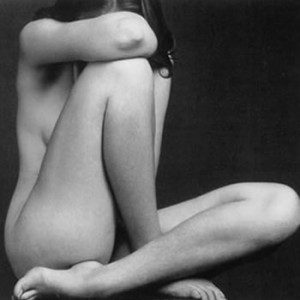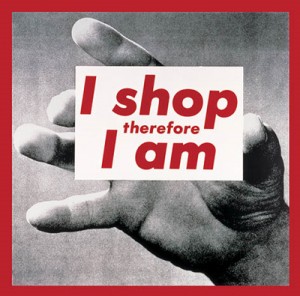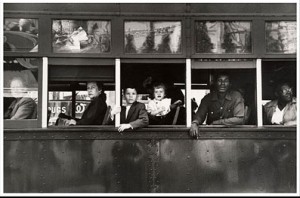Photography, the Key Concepts by David Bate, Berg Publishers
Where exactly does photography fit into the world of art? That photography is, or can be, “art” has been a settled question for a century or more. Far more difficult to answer is: what sorts of photographs are “art.”
And, who is it that determines the answer to that question?

Edward Weston
David Bate in “Photography the Key Concepts” raises the question early on by pointing out that any attempt to compile a history of photography (or art generally) will inevitably fall into the trap of becoming a history of the taste and style of an era. In fact, it would be more accurate to say it will be a history of the taste and style of an elite group of curators, collectors and photographers of various eras.
Photographic histories almost all fall into the pattern of “Great Man/Woman” histories and most have also traced the history of photography as though it were a progression of advancements in vision: beginning in its earliest days with a quest to develop the technology needed to record images from life, moving then to pictorialism as a heavy-handed effort to turn photography into “art” and finally culminating in “Straight Photography” as the defining aesthetic of the medium.Beaumont Newhall’s classic history of photography set this trajectory and other histories often follow the same path, though more recent histories are not nearly as rigid as Newhall. Â An outspoken champion of straight photography, Newhall’s last revision was in the 1980s and touched only briefly on the changes that were just beginning to occur in the world of art photography.

Barbara Kruger
Certainly straight photography encompassed a wide range of styles, from Edward Weston and Ansel Adams to Henri Cartier Bresson and Robert Frank to Lewis Baltz and Stephen Shore. But, for most of the 20th century, with few exceptions “serious” photography was expected to be straight photography (at least in the United States).
Everything has been turned on its head in the last several decades and now, it seems as though the art world has largely reversed itself, still paying tribute to straight photographers, but placing an increasingly greater value and lavishing attention on photographers who come out of what A.D. Coleman termed the “directorial mode.”
Bate’s mission isn’t to arbitrate the debate, but instead he seems to want to raise more basic questions about the nature of photography, its place in society and what we are saying when we determine and define images that are viewed as art.
Bate explores areas of photography that conventional histories often dismiss: industrial portraits, police photography and advertising product shots for example. He concludes with a thoughtful discussion of the impact of the Internet – a topic few critics have tackled and which deserves much more thorough discussion.
He sprinkles the book with observations that could, on their own, justify extensive exploration. He points out, for example, that when Newhall wrote his iconic History of

Garry Winnogrand, Couple at Zoo Looking at Each Other, 1962
Photography, he was in the employ of New York’s Museum of Modern Art and one objective of the book was to promote the Museum’s collection and establish it as one of the premier collections of photographs in the world. Images and photographers not in the collection of the Museum did not get included and were thus (either intentionally or unintentionally) often deemed unworthy.
But, the most interesting portion of the book might be his chapter on Art Photography. He begins with the basic question of what constitutes “art” and points out that “the idea of ‘Art’ as a noun, indicating a separate institution, and the ‘artist’ who practices within it are relatively recent phenomena.”
He observes that many, if not all, photographers, aspire to have their images considered “art.” Amateurs and professional alike, whether they use their photographs for advertising, journalism, or simply the ordinary documentation and their lives and travels, want their images to be considered art. Â I am no exception.
Bate asks difficult questions about the nature of photographs as art, because today, that can range wildly from the purely aesthetic vision of Edward Weston to the highly politicized imagery of Barbara Kruger. He observes that the marketplace has in recent years had a massive influence on the definitions and consideration of photographs.

Robert Frank, The Americans
Art is a global industry and photography, as the most modern, reproducible and available of the visual arts is often at the center of that industry. The value of photographs as collectable art has skyrocketed, yet I wonder how much of the work of the late 20th and early 21st centuries will stand the test of time. Will the value of photographs keep rising or will they crash at some point?
When Bate moves on to “global photography” he identifies three trends on the Internet that are influencing photography today.
The first he describes as a “local accumulation whose aim is global.” Within this category, Bate places “stock” photographs that have become popular, handy and cheap tools for designers illustrating everything from jewelry stores to political candidates.
The Internet did not create this genre. For most of the 20th century newspaper advertising department routinely relied on generic “clip art” catalogs to illustrate ads for local businesses that could not afford either an ad agency or a designer. Â But, the Internet has helped foster an explosion of these vague, generic images designed to be used for almost any commercial purpose.
Are these images a cause or a symptom of the global tend toward uniformity that cuts across cultures and nations today; part of the trend that gives us the same fast-food restaurants in Paris, Illinois, and Paris, France?
The second trend, Bate calls a “global network who aim is local.” Within that category he places social networking sites and services, such as Facebook, Flickr and eBay. That these sites are playing a massive role in social upheavals across the world is clear. What the ultimate impact may be is less so.
Finally, Bate identifies “an aim neither local nor global, but simply one defined as ‘distraction.'”
This may be, in my view, one of the most significant trends affecting art and communications in general. If we are candid, “distraction” has always been at the center of art. Whether it is photography, painting, music, literature or any other medium we consider to be “art,” the reality is that in the modern context art is essentially a distraction to take the patron out of the ordinary world which we all inhabit and transport us to a new level.
The best art challenges us and opens our eyes to new visions – whether it is through a book, a photograph, a song or a picture.
What is clear from even a cursory surfing of the web is that these “distractions” are fostering some of the most creative elements of society today. It can be hard to find the needle of genius hidden within the haystack of cat videos on You Tube, but it is there.
This has massive ramifications for the art establishment. It doesn’t take much web surfing to come to the conclusion that much of what we term “modern art” appears a bit boring, hackneyed or even superficial in comparison to what is happening on the Internet. Â The most creative artists today may not be found on the walls of the museums or squirreled away in the collections of private patrons, but rather on the World Wide Web. I can’t shake the feeling that the arbiters of taste may find themselves left behind by the vitality of the Internet.
At the same time, it may offer each of us, as would-be artists, the opportunity to challenge and test ourselves in ways never before possible.
We all strive to create “art” even if we do not really know what that means, because at the heart of that desire is the hope that by affirming the value of our images, Â we will by extension affirm the value of the creator.
Striving for Art
Where exactly does photography fit into the world of art? That photography is, or can be, “art” has been a settled question for a century or more. Far more difficult to answer is: what sorts of photographs are “art.”
And, who is it that determines the answer to that question?
Edward Weston
David Bate in “Photography the Key Concepts” raises the question early on by pointing out that any attempt to compile a history of photography (or art generally) will inevitably fall into the trap of becoming a history of the taste and style of an era. In fact, it would be more accurate to say it will be a history of the taste and style of an elite group of curators, collectors and photographers of various eras.
Photographic histories almost all fall into the pattern of “Great Man/Woman” histories and most have also traced the history of photography as though it were a progression of advancements in vision: beginning in its earliest days with a quest to develop the technology needed to record images from life, moving then to pictorialism as a heavy-handed effort to turn photography into “art” and finally culminating in “Straight Photography” as the defining aesthetic of the medium.Beaumont Newhall’s classic history of photography set this trajectory and other histories often follow the same path, though more recent histories are not nearly as rigid as Newhall. Â An outspoken champion of straight photography, Newhall’s last revision was in the 1980s and touched only briefly on the changes that were just beginning to occur in the world of art photography.
Barbara Kruger
Certainly straight photography encompassed a wide range of styles, from Edward Weston and Ansel Adams to Henri Cartier Bresson and Robert Frank to Lewis Baltz and Stephen Shore. But, for most of the 20th century, with few exceptions “serious” photography was expected to be straight photography (at least in the United States).
Everything has been turned on its head in the last several decades and now, it seems as though the art world has largely reversed itself, still paying tribute to straight photographers, but placing an increasingly greater value and lavishing attention on photographers who come out of what A.D. Coleman termed the “directorial mode.”
Bate’s mission isn’t to arbitrate the debate, but instead he seems to want to raise more basic questions about the nature of photography, its place in society and what we are saying when we determine and define images that are viewed as art.
Bate explores areas of photography that conventional histories often dismiss: industrial portraits, police photography and advertising product shots for example. He concludes with a thoughtful discussion of the impact of the Internet – a topic few critics have tackled and which deserves much more thorough discussion.
He sprinkles the book with observations that could, on their own, justify extensive exploration. He points out, for example, that when Newhall wrote his iconic History of
Garry Winnogrand, Couple at Zoo Looking at Each Other, 1962
Photography, he was in the employ of New York’s Museum of Modern Art and one objective of the book was to promote the Museum’s collection and establish it as one of the premier collections of photographs in the world. Images and photographers not in the collection of the Museum did not get included and were thus (either intentionally or unintentionally) often deemed unworthy.
But, the most interesting portion of the book might be his chapter on Art Photography. He begins with the basic question of what constitutes “art” and points out that “the idea of ‘Art’ as a noun, indicating a separate institution, and the ‘artist’ who practices within it are relatively recent phenomena.”
He observes that many, if not all, photographers, aspire to have their images considered “art.” Amateurs and professional alike, whether they use their photographs for advertising, journalism, or simply the ordinary documentation and their lives and travels, want their images to be considered art. Â I am no exception.
Bate asks difficult questions about the nature of photographs as art, because today, that can range wildly from the purely aesthetic vision of Edward Weston to the highly politicized imagery of Barbara Kruger. He observes that the marketplace has in recent years had a massive influence on the definitions and consideration of photographs.
Robert Frank, The Americans
Art is a global industry and photography, as the most modern, reproducible and available of the visual arts is often at the center of that industry. The value of photographs as collectable art has skyrocketed, yet I wonder how much of the work of the late 20th and early 21st centuries will stand the test of time. Will the value of photographs keep rising or will they crash at some point?
When Bate moves on to “global photography” he identifies three trends on the Internet that are influencing photography today.
The first he describes as a “local accumulation whose aim is global.” Within this category, Bate places “stock” photographs that have become popular, handy and cheap tools for designers illustrating everything from jewelry stores to political candidates.
The Internet did not create this genre. For most of the 20th century newspaper advertising department routinely relied on generic “clip art” catalogs to illustrate ads for local businesses that could not afford either an ad agency or a designer. Â But, the Internet has helped foster an explosion of these vague, generic images designed to be used for almost any commercial purpose.
Are these images a cause or a symptom of the global tend toward uniformity that cuts across cultures and nations today; part of the trend that gives us the same fast-food restaurants in Paris, Illinois, and Paris, France?
The second trend, Bate calls a “global network who aim is local.” Within that category he places social networking sites and services, such as Facebook, Flickr and eBay. That these sites are playing a massive role in social upheavals across the world is clear. What the ultimate impact may be is less so.
Finally, Bate identifies “an aim neither local nor global, but simply one defined as ‘distraction.'”
This may be, in my view, one of the most significant trends affecting art and communications in general. If we are candid, “distraction” has always been at the center of art. Whether it is photography, painting, music, literature or any other medium we consider to be “art,” the reality is that in the modern context art is essentially a distraction to take the patron out of the ordinary world which we all inhabit and transport us to a new level.
The best art challenges us and opens our eyes to new visions – whether it is through a book, a photograph, a song or a picture.
What is clear from even a cursory surfing of the web is that these “distractions” are fostering some of the most creative elements of society today. It can be hard to find the needle of genius hidden within the haystack of cat videos on You Tube, but it is there.
This has massive ramifications for the art establishment. It doesn’t take much web surfing to come to the conclusion that much of what we term “modern art” appears a bit boring, hackneyed or even superficial in comparison to what is happening on the Internet. Â The most creative artists today may not be found on the walls of the museums or squirreled away in the collections of private patrons, but rather on the World Wide Web. I can’t shake the feeling that the arbiters of taste may find themselves left behind by the vitality of the Internet.
At the same time, it may offer each of us, as would-be artists, the opportunity to challenge and test ourselves in ways never before possible.
We all strive to create “art” even if we do not really know what that means, because at the heart of that desire is the hope that by affirming the value of our images, Â we will by extension affirm the value of the creator.
Share this: